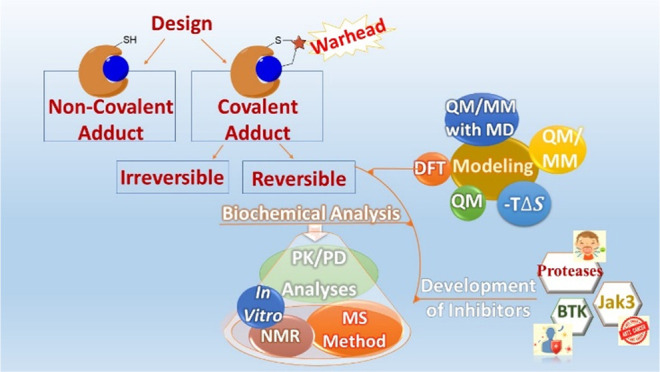- Record: found
- Abstract: found
- Article: found
Reversible Covalent Inhibition—Desired Covalent Adduct Formation by Mass Action

Read this article at
Abstract

Covalent inhibition has seen a resurgence in the last several years. Although long-plagued by concerns of off-target effects due to nonspecific reactions leading to covalent adducts, there has been success in developing covalent inhibitors, especially within the field of anticancer therapy. Covalent inhibitors can have an advantage over noncovalent inhibitors since the formation of a covalent adduct may serve as an additional mode of selectivity due to the intrinsic reactivity of the target protein that is absent in many other proteins. Unfortunately, many covalent inhibitors form irreversible adducts with off-target proteins, which can lead to considerable side-effects. By designing the inhibitor to form reversible covalent adducts, one can leverage competing on/off kinetics in complex formation by taking advantage of the law of mass action. Although covalent adducts do form with off-target proteins, the reversible nature of inhibition prevents accumulation of the off-target adduct, thus limiting side-effects. In this perspective, we outline important characteristics of reversible covalent inhibitors, including examples and a guide for inhibitor development.
Related collections
Most cited references110
- Record: found
- Abstract: found
- Article: not found
Glutathione transferases.
- Record: found
- Abstract: found
- Article: not found
Glutathione: overview of its protective roles, measurement, and biosynthesis.
- Record: found
- Abstract: found
- Article: not found